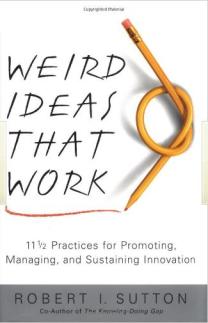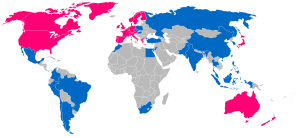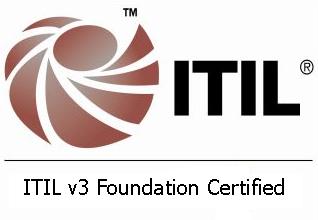Archive for the ‘Entrepreneurship’ Category
How to train your sales team efficiently
Posted in Entrepreneurship, Marketing, Sales, tagged alper, çelik, best practices, Business, educating, Marketing, sales, Sweden, teaching, tele2, telecom on March 2, 2013| Leave a Comment »
Shift from Voice to Data
Posted in Business, Cloud, Entrepreneurship, Tele2, Telecom, tagged alper, çelik, Business, Cloud, data, ott, Sweden, telecom, voice, voip on April 3, 2012| 1 Comment »
One of the interesting topics that we are discussing a lot nowadays in telecom sector is the shift from voice to data. The graph on the left shows how much data is consumed globally per year and what types of services are filling the capacity up. It is obvious that the world is going mobile and mobile video is becoming more and more important. But how can telcos charge enough for the data?
In traditional telecom world, voice is priced per-minute or per-second because that is reflective of the industry’s cost structure (and billing sophistication) about 100 years. When you had a physical copper connection between points A & B, with a human doing the switching, both capex and opex had fairly logical temporal-based components.
On the other hand, what we see with mobile data is a blend of volume, duration, use-case, location and maybe even congestion levels can be used as the basis for service pricing. As you can see the charging models for voice and data must be somehow different in my point of view. I think we telcos need to be more innovative when it comes to the bsuiness models and pricing with an increasing demand towards data.
What do you think might be a good charging model for telcos then? The fact is that the minute is fundamentally an anchor to the past, when all voice was “telephony” and all telephony was “voice”. The faster we get rid of our duration-centric obsession, the more likely we will be able to profit from The Future of Voice, before others less confined beat the telecoms industry to the punch.
How NASA Builds Teams
Posted in Business, Entrepreneurship, Management on June 4, 2010| Leave a Comment »
 I am reading a book called “How NASA Builds Teams” and I thin it is an interesting books for those of you who would like to improve their soft skills. There I learned a tool called The 4-D Organization System. Basically, the tool tells us how people make decisions ans build teams.
I am reading a book called “How NASA Builds Teams” and I thin it is an interesting books for those of you who would like to improve their soft skills. There I learned a tool called The 4-D Organization System. Basically, the tool tells us how people make decisions ans build teams.
A reporter asked Richard Feynman to define physics. He answered, “Physics is what physicists do late at night.” Actually, physicists work to understand nature with mathematical models called “laws.” These generalizations simplify nature and allow us to make reliable predictions about the future. These laws are only as valid as the results of experiments that test them. Physicists begin by guessing the law. Therefore, the writer guesses what kind of X–Y system might simplify our understanding of teams and leaders. It is reasonable to begin with the most fundamental actions of leaders—using information to make important decisions. (more…)
In Pursuit of Elegance: 12 Indispensable Tips
Posted in Business, entrepreneur, Entrepreneurship, Management, Venture Capital, tagged alper, alper celik, çelik, Business, entrepreneurs, Entrepreneurship, In Pursuit of Elegance, In Pursuit of Elegance: 12 Indispensable Tips, IT, KTH, Matthew E. May, small business, Stockholm, Sweden, technology on June 4, 2009| 1 Comment »
 Matthew E. May is the author of In Pursuit of Elegance: Why the Best Ideas Have Something Missing and the ChangeThis manifesto called Creative Elegance. He spent nearly a decade as a close adviser to Toyota and works with creative teams and senior leaders at a number of top Fortune companies.
Matthew E. May is the author of In Pursuit of Elegance: Why the Best Ideas Have Something Missing and the ChangeThis manifesto called Creative Elegance. He spent nearly a decade as a close adviser to Toyota and works with creative teams and senior leaders at a number of top Fortune companies.
1. Question: How do you define elegance?
Answer: Something is elegant if it is two things at once: unusually simple and surprisingly powerful. One without the other leaves you short of elegant. And sometimes the “unusual simplicity” isn’t about what’s there, it’s about what isn’t. At first glance, elegant things seem to be missing something.
2. Question: Why is elegance so important?
Answer: Elegance cuts through the noise, captures our attention, and engages us. The point of elegance is to achieve the maximum impact with the minimum input. It’s a thoughtful, artful subtractive process focused on doing more and better with less. That’s especially important during this economic crisis when everyone is trying to move forward while consuming fewer resources. (more…)
Can Entrepreneurs Change the World?
Posted in entrepreneur, Entrepreneurship, Management, Network Society, Who I am, tagged entreprene, entrepreneur, Entrepreneurship, ICT, inspiration, Management, small business on May 18, 2009| Leave a Comment »
Weird Ideas That Work
Posted in Business, Entrepreneurship, Management, Marketing, tagged alper celik, çelik, enterpreneur, enterpreneurship, management science, robert i sutton, stanford, sutton, Weird Ideas That Work on April 18, 2009| 1 Comment »
 I am reading a book called Weird Ideas That Work by Robert I. Sutton. Professor Sutton from Stanford is a unique voice with an urgent message about how to generate and capitalize on new ides. Since I count myself as an entrepreneurial person, I loved few ideas and want to share them with you. The book has 3 major parts; Why the weird ideas work, the weird ideas and putting the weird ideas to work. I did not like all of the weird ideas in this book and i am a little skeptical about some of them. But, still want to share few of my notes with you. If you are interested in management and innovation, I strongly recommend you to read this book.
I am reading a book called Weird Ideas That Work by Robert I. Sutton. Professor Sutton from Stanford is a unique voice with an urgent message about how to generate and capitalize on new ides. Since I count myself as an entrepreneurial person, I loved few ideas and want to share them with you. The book has 3 major parts; Why the weird ideas work, the weird ideas and putting the weird ideas to work. I did not like all of the weird ideas in this book and i am a little skeptical about some of them. But, still want to share few of my notes with you. If you are interested in management and innovation, I strongly recommend you to read this book.
Weird Ideas;
1- Hire slow learners
2- Hire people who make you uncomfortable, even those you dislike
3- Hire people you do not need
4- Encourage people to ignore and defy superiors and peers
5- Find some happy people and get them to fight
6- Reward success and failure, punish inaction
7- Decide to do something that you will probably fail, then convince yourself and everyone else that success is certain
8- Think of some ridiculous or impractical things to do, then plan to do them
9- Avoid, distract and bore customers, critics and anyone who just wants to talk about money
10- Dont try to learn anything from people who seems to have solved the problems you face
11- Forget the past, especially your company’s success
I personally did not like the weird idea 3 and 8. But these are for companies where innovation is a way of life. We can not apply these weird ideas in large and established companies. After all, the book is a breakthrough in management thinking, “weird ideas” can help organizations achieve a balance between sustaining performance and fostering new ideas. As a final message; to succeed, you need to be both conventional and weird.
Mission Vision Statements
Posted in Business, entrepreneur, Entrepreneurship, Marketing, tagged alper, çelik, Business, crossing the chasm, Geoffrey Moore, Geoffrey Moore's book Crossing the Chasm, IT, KTH, mantra, mission statement, stockholm school of entrepreneurship, vision statement on April 14, 2009| Leave a Comment »
I am trying to find mission and vision statements for a project that I involved in. I just realized that mission-vision statement helps managers to pass the elevator test — the ability to explain the project to someone within two minutes. A good framework from Geoffrey Moore’s book Crossing the Chasm can help you to position your company or product. It follows the form:
For (target customer)
Who (statement of the need or opportunity)
The (product name) is a (product category)
That (key benefit, compelling reason to buy)
Unlike (primary competitive edge)
Our product (statement of primary differentiation)
Once you fill this form out, it will be easier for you to find your vision-mission statements.
Emerging Markets
Posted in Business, emerging markets, Entrepreneurship, tagged alper, çelik, Business, China, computer, emerging markets, Entrepreneurship, IT, KTH, Stockholm, Sweden, telecom, turkey on November 18, 2008| 3 Comments »
 We can define Emerging Economies as those “regions of the world that are experiencing rapid informationalization under conditions of limited or partial industrialization.” It appears that emerging markets lie at the intersection of non-traditional user behavior, the rise of new user groups and community adoption of products and services, and innovations in product technologies and platforms. Examples of emerging markets include Russia, China, Turkey, Taiwan, India, Pakistan, Brazil, Egypt, United Arab Emirates and some more. But, obviously China is one of the most important in emerging markets.
We can define Emerging Economies as those “regions of the world that are experiencing rapid informationalization under conditions of limited or partial industrialization.” It appears that emerging markets lie at the intersection of non-traditional user behavior, the rise of new user groups and community adoption of products and services, and innovations in product technologies and platforms. Examples of emerging markets include Russia, China, Turkey, Taiwan, India, Pakistan, Brazil, Egypt, United Arab Emirates and some more. But, obviously China is one of the most important in emerging markets.
Technology Adoption Life Cycle – TALC
Posted in Entrepreneurship, tagged alper, çelik, chasm, crossing the chasm, Entrepreneurship, Geoffrey A. Moore, innovators, inside the tornado, Kista, KTH, moore, startup, TALC, Technology Adoption Life Cycle on November 10, 2008| 2 Comments »
I am a computer engineer and a master student in Sweden. I am studying ICT Entrepreneurship at The Royal Institute of Technology. Currently, I am working on an Open Source Project at KTH, Stockholm and i have done a Technology Adoption Life Cycle paper for Open Source, PC-Based Networking in Africa. I would like to share it with people and i am also waiting for your comments.
You can find the document from here
Crossing the Chasm
Posted in Entrepreneurship, tagged alper celik, çelik, Business, crossing the chasm, entreprene, entrepreneur, IT, Kista, KTH, launching new ventures, Marketing, start-up, Stockholm, Sweden, the art of start, the innovators dilemma on August 28, 2008| 2 Comments »
One of my article about a book advice had been published in a magazin in Stocholm. You can find the article from here and have a look at what i wrote about Crossing the Chasm. I think this book is a must book for an entrepreneur.




